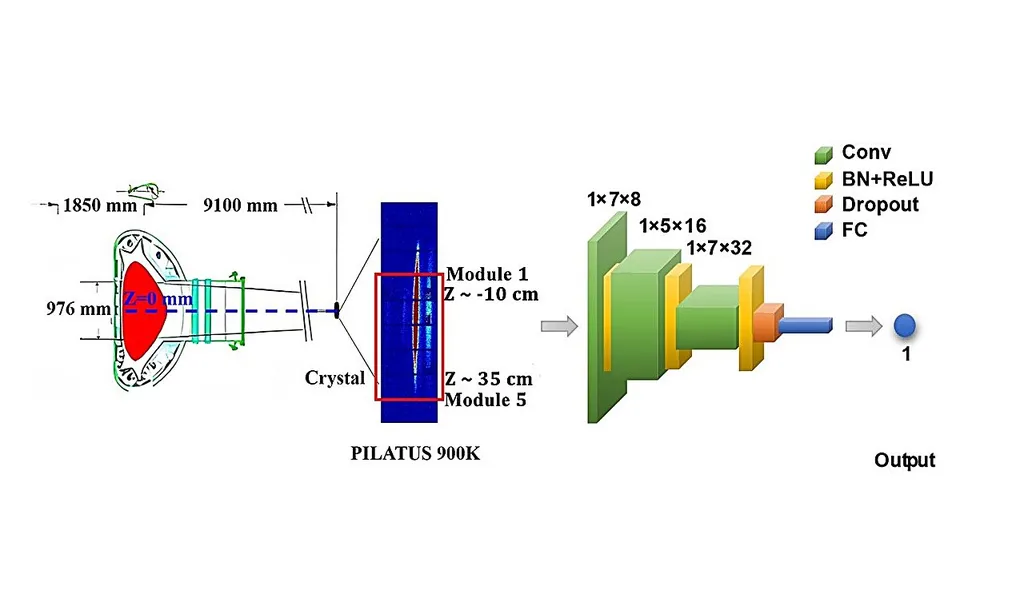In a groundbreaking development that bridges the gap between machine learning and nuclear fusion research, scientists have devised a novel method to optimize input parameters for edge transport modeling using neural networks. This advancement, published in the journal *Nuclear Fusion* (translated from the original title), promises to streamline the process of matching simulation data with experimental measurements, potentially accelerating progress in the energy sector.
At the heart of this research is a feed-forward neural network (FNN) that acts as a surrogate model, efficiently mapping input parameters to synthetic signals. The lead author, Y. Luo, from the Forschungszentrum Jülich GmbH and Heinrich Heine University Düsseldorf, explains, “Our method significantly reduces the computational costs and eliminates the need for manual parameter tuning. This is a game-changer for researchers working on edge transport modeling.”
The process begins with the generation of an EMC3-EIRENE simulation database, covering a range of key input parameters. The neural network is then trained on this database to predict synthetic data that closely match experimental measurements from the Wendelstein 7-X stellarator. “The trained surrogate model is incorporated into a Bayesian inference framework with Dynamic Nested Sampling to infer posterior distributions of the input parameters,” Luo elaborates. This step involves comparing the FNN-predicted synthetic data with experimental data, accounting for measurement uncertainties.
The implications of this research are far-reaching. By reducing the time and resources required for parameter optimization, this method could expedite the development of fusion energy technologies. “This approach can be generalized to other similar modeling codes, making it a versatile tool for the energy sector,” Luo adds.
The successful application of this neural network-based method not only enhances the accuracy of simulations but also paves the way for more efficient and cost-effective research in nuclear fusion. As the energy sector continues to explore sustainable and clean energy solutions, advancements like this are crucial for overcoming technical challenges and achieving commercial viability.
In summary, this research represents a significant step forward in the integration of machine learning and nuclear fusion research. By leveraging the power of neural networks, scientists can optimize input parameters more efficiently, ultimately contributing to the development of sustainable energy technologies. As Luo notes, “This method has the potential to revolutionize the way we approach edge transport modeling, making it faster, more accurate, and more accessible.”

